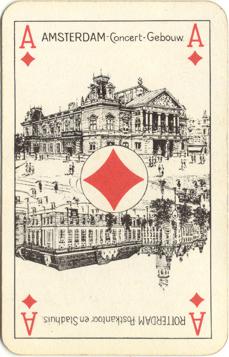 |
This deck by Van Genechten was published in a 33 cards version as "Piquet Nr. 160 G", but also as a 53 cards deck. It has the maker's version of the Rhineland pattern and Dutch indices. The aces show scenes from different Dutch cities.
The deck was published in the 1930's. The "Pier in Scheveningen", as depicted on the Ace of Diamonds, was constructed around 1900 but dismantled by the Germans in 1943. |

 
 |
|














